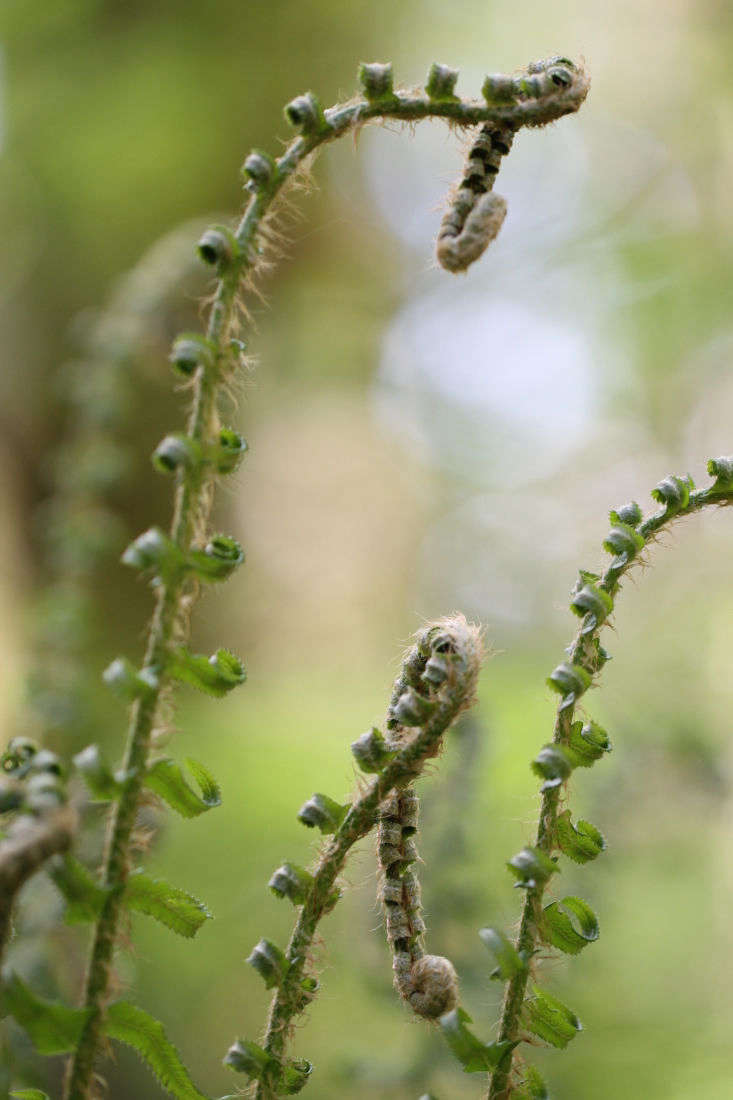Western Sword Fern, Polystichum munitum
Western sword fern is the sort of classic fern you are most likely to spot on a shady wooded trail, showing off its root muscles as it clings to rocky slopes or displaying its pack mentality as it nestles in a plant posse under stately redwoods. But keep in mind that it also is a highly versatile and useful perennial fern for a home garden.
Please keep reading to learn about this friendly fern.

Native to North America (from Alaska to California), Western sword fern gets its name from its elongated blade-like fronds. The robust, handsome leaves can grow several feet long and the plant can have as many as a hundred leaves (you don’t need to feel guilty cutting a few to add to floral arrangements). Long ago on the California coast, Native American Miwoks used the long, sturdy fronds to thatch structures.

Definitely take a look at the undersides of the fronds as you will notice rows of curious brown sporangia, where each spot contains many spores which the fern uses as another way to reproduce besides through rhizomes.

When planting a sword fern, provide humus rich, well-draining fertile soil. Water deeply and regularly for the first growing season to ensure an extensive root system. Once established in the garden, sword ferns can grow to a sturdy three by three feet and be carefree. They become fairly drought resistant, very deer resistant, and add an evergreen textural interest to most garden spaces—but especially to a woodland, tropical, or zen garden.

Cheat Sheet
- Good for hillside erosion control, as an understory plant, and as a ground cover.
- Western sword fern pairs perfectly with Heuchera, rhododendrons, azaleas, and hydrangeas.
- Great color partners for western sword fern are white, chartreuse, and variegated leaves.
- Western sword ferns are one of the few plants that will tolerate dry shade under dense growth of Douglas firs, western red cedars, and redwood trees.

Keep It Alive
- While appreciating all degrees of shade, western sword fern will tolerate some sun as long as its roots are provided sufficient moisture, especially for the first year.
- If good drainage is present, this fern can adapt to a range of soil conditions.
- Because dead fronds will stay attached all winter, unlike most leaves that fall off, you must cut them off in the early spring before new bright green fiddlehead shoots unfurl.
- Divide western sword ferns in spring and transplant to other garden areas for enjoyment.
For more growing tips, see Western Sword Ferns 101: A Field Guide to Planting, Care & Design. So many ferns, so little time—see our Garden Design 101 guides to Asparagus Ferns and Tree Ferns, as well. For more plants that love shady spots, read:
- 10 Shade Garden Ideas to Steal from an English Woodland
- Container Gardening: 12 Shade-Loving Plants in My Backyard
- 23 and Me: My Favorite Edible Plants to Grow in Shade










Have a Question or Comment About This Post?
Join the conversation